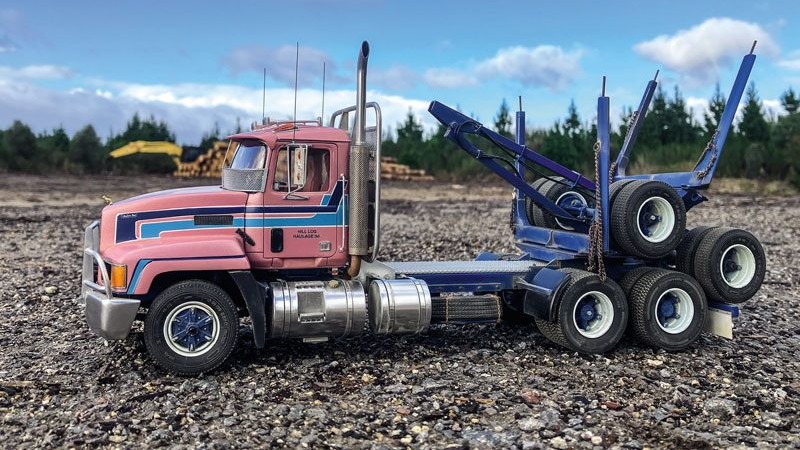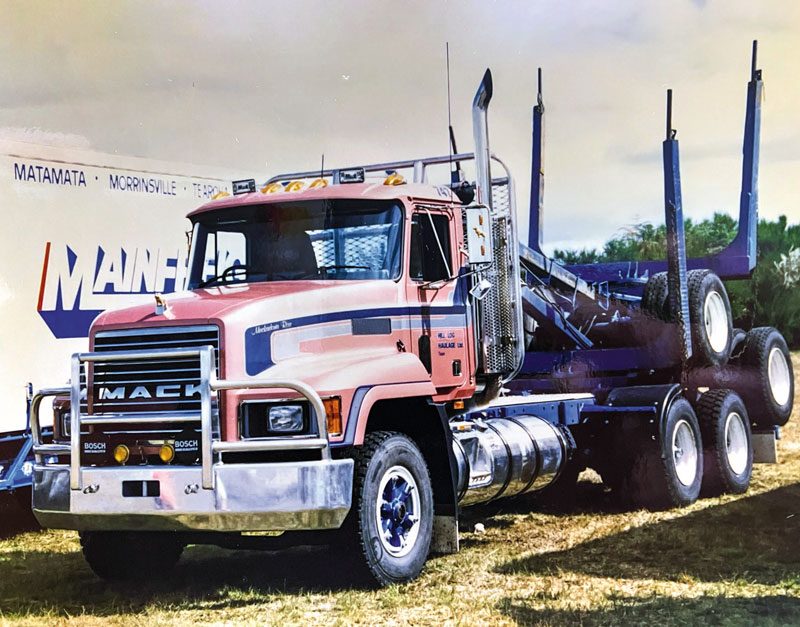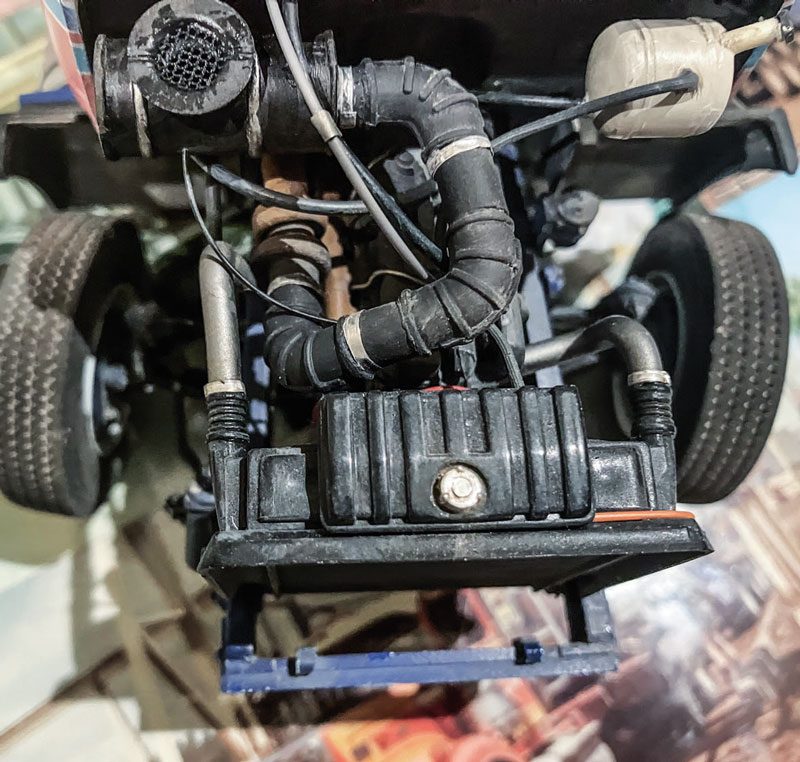
Marty Crooks wanted to build a model replica of Adrian and Robyn Hill’s CH Mack logger the moment he clapped eyes on the September 1992 New Zealand Trucking magazine Top Truck poster 30-odd years ago.
The CH Mack was introduced to New Zealand in 1991; the first handful built at Motor Truck Distributors’ Palmerston North plant using the older chassis, reminiscent of the R and RB models. The CH was highly anticipated and, once available, were quickly put to work. Not long after, one would become the subject of a New Zealand Trucking Top Truck poster – Mackadonia- Rose, a 1991 CHR689RS for Taupo-based Adrian and Robyn Hill.
This poster had a lasting impression on a young Marty Crooks, and about 10 years ago, an opportunity arose to purchase a P&P Resin Works aftermarket CH cab and bonnet. Once acquired, the cab and bonnet were stashed away with this future build in mind.

“About a year ago, I decided it was time to get stuck into this build and get it done,” says Marty. “It is special in a way because a few of these aftermarket P&P cabs came into the country through a special half-price subsidised deal by the New Zealand Model Truck Association for its members, and I think I’m right in saying that this is only the second one that has been built up.”
Marty started by scale-drawing the dimensions of the build, making sure it had the correct proportions. Getting this information took work. But construction started thanks to old photographs and reference information, and help from good mate and fellow model truck builder Gordon O’Riley.
The first step was to scratch-build a chassis for the truck, done by using Evergreen plastic rails and cross members, as well as camelback suspension from an off-the-shelf kitset of an R-model Mack. The Mack E7 engine, artillery wheels and tanks were all sourced from Auslowe.
With the chassis sitting on its wheels, Marty constructed the cab mounts and hinged the bonnet. Fitting the quarter guards proved troublesome and took a bit of time to get right. The tanks were fitted with resin brackets and completed with straps made from thin aluminium strips. These were cut and folded at each end in readiness for mounting once painted. The dashboard from P&P was converted to right-hand drive, and Marty made a roof console and matching door cards to finish the interior.

The bullbar, trailer gear and logging equipment were all 100% scratch-built using plastic. Getting the self-loading trailer to operate correctly was challenging. It required some patience to get it to fold itself up onto the back of the truck fluidly. “There are the various pivot points to contend with, and also the making of the hydraulic rams out of thin aluminium tube. But the reference photos that Gordon provided really helped show how it all worked,” Marty explains.
The paint finish was airbrushed using Tamiya lacquers. For the cab, Marty used a mix of colours and trial and error to get the correct shade. The stripes were then marked out and sprayed, and once the custom decals were applied, a satin clearcoat topped it off. Marty wanted to give the build a slightly ‘worn in’ look. So a light weathering of the engine, chassis and wheels using Ammo enamel washes was applied, with pigments lightly dusted over the cab and bonnet.
Check out the images – this outstanding replica seems to have just dropped out of that 1992 poster.
















